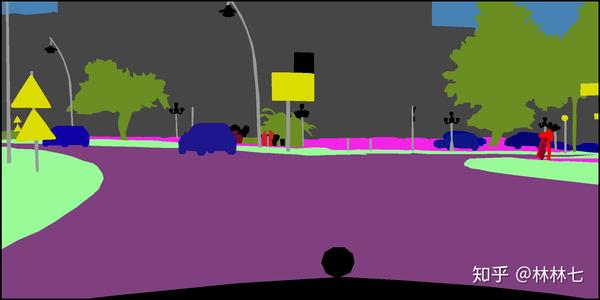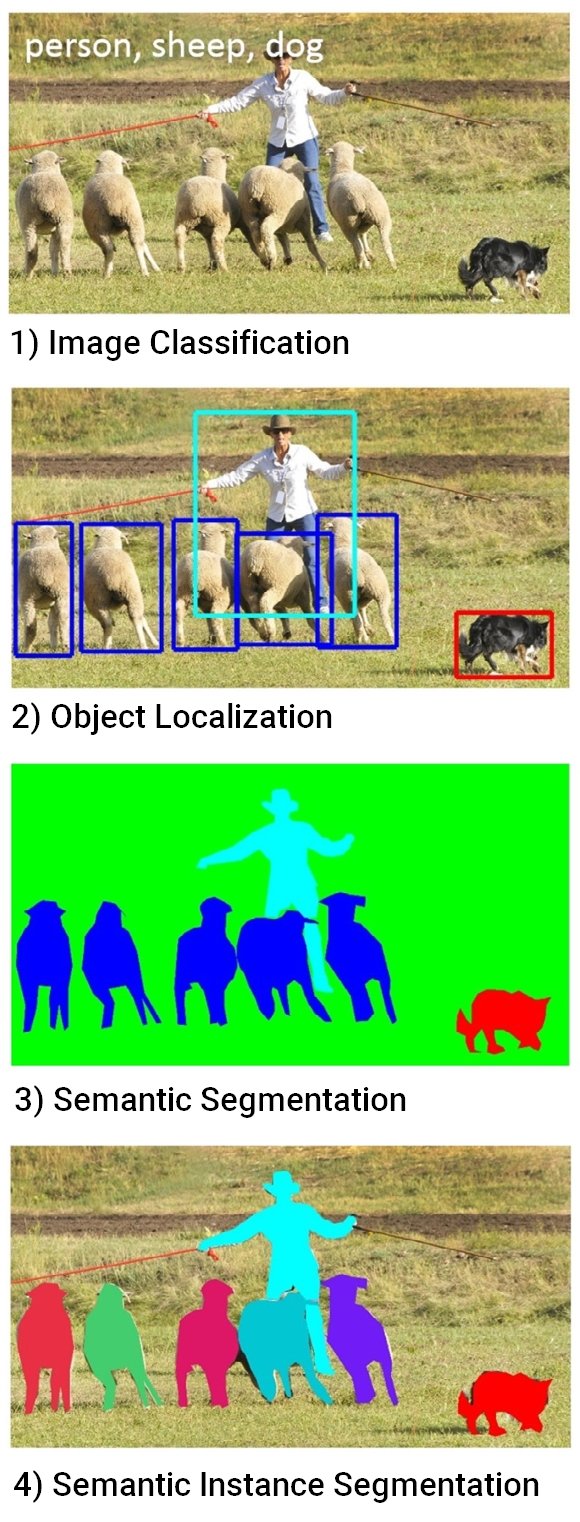40 coco dataset labels list
Understanding COCO Dataset - Section COCO dataset provides large-scale datasets for object detection, segmentation, keypoint detection, and image captioning. We will explore the above terminologies in the upcoming sections. It contains over 80 object categories with over 1.5 million object instances for context recognition, object detection, and segmentation. History of COCO coco | TensorFlow Datasets COCO is a large-scale object detection, segmentation, and captioning dataset. Note: * Some images from the train and validation sets don't have annotations. * Coco 2014 and 2017 uses the same images, but different train/val/test splits * The test split don't have any annotations (only images).
COCO Dataset | DeepAI The COCO dataset has been developed for large-scale object detection, captioning, and segmentation. The 2017 version of the dataset consists of images, bounding boxes, and their labels Note: * Certain images from the train and val sets do not have annotations. * Coco 2014 and 2017 datasets use the same image sets, but different train/val/test splits * The test split does not have any ...
Coco dataset labels list
How to Filter the COCO Dataset by Category - Immersive Limit Remove any extra categories. Give the categories new ids (counting up from 1) Find any annotations that reference the desired categories. Filter out extra annotations. Filter out images not referenced by any annotations. Save a new json file. For example usage, please see the README.md file in the repo. Understanding. Create COCO Annotations From Scratch - Immersive Limit The COCO dataset is formatted in JSON and is a collection of "info", "licenses", "images", "annotations", "categories" (in most cases), and "segment info" (in one case). The "info" section contains high level information about the dataset. If you are creating your own dataset, you can fill in whatever is appropriate. COCO Dataset - Hub | Activeloop Load COCO dataset fast in Python. COCO is object detection, segmentation, and captioning dataset. Use COCO with TensorFlow & PyTorch. Visualize COCO dataset. ... categories: tensor containing the numerical label which represents the position of the object in a list of 80 object categories.
Coco dataset labels list. The COCO Dataset: Best Practices for Downloading ... - Medium The command to load COCO takes the following arguments allowing you to customize exactly the samples and labels that you are interested in:. label_types: a list of types of labels to load.Values ... Coco Labels - Python Repo Common Objects in Context (COCO) Labels List of object labels / categories The labels are divided into three sections: Original COCO paper COCO dataset release in 2014 COCO dataset release in 2017 Since the labels for COCO datasets released in 2014 and 2017 were the same, they were merged into a single file. Extracting bounding boxes and category labels in MS-COCO dataset I am working with MS-COCO dataset and I want to extract bounding boxes as well as labels for the images corresponding to backpack (category ID: 27) and laptop (category ID: 73) categories, and store them into different text files to train a neural network based model later.. I have already extracted the images corresponding to the aforementioned two categories and have created empty annotation ... Labels for the Mobilenet v2 SSD model trained with the COCO ... - GitHub coco_labels.txt This file contains bidirectional Unicode text that may be interpreted or compiled differently than what appears below. To review, open the file in an editor that reveals hidden Unicode characters.
solaris.data.coco — solaris 0.4.0 documentation This can be:: 1. a string path to an image, 2. the path to a directory containing a bunch of images, 3. a list of image paths, 4. a dictionary corresponding to COCO-formatted image records, or 5. a string path to a COCO JSON containing image records. If a directory, the `recursive` flag will be used to determine whether or not to descend into ... Introduction to the COCO Dataset - OpenCV The Common Object in Context (COCO) is one of the most popular large-scale labeled image datasets available for public use. It represents a handful of objects we encounter on a daily basis and contains image annotations in 80 categories, with over 1.5 million object instances. COCO format - Rekognition - AWS Documentation annotations - a list of annotations (including bounding boxes) that are present in all images in the dataset. categories - a list of label categories. To create a Custom Labels manifest, you use the images , annotations, and categories lists from the COCO manifest file. The other sections ( info, licences ) aren't required. COCO - Common Objects in Context info@cocodataset.org. Home; People
COCO Dataset | Papers With Code The MS COCO ( Microsoft Common Objects in Context) dataset is a large-scale object detection, segmentation, key-point detection, and captioning dataset. The dataset consists of 328K images. Splits: The first version of MS COCO dataset was released in 2014. It contains 164K images split into training (83K), validation (41K) and test (41K) sets. How to work with object detection datasets in COCO format In order to load your COCO formatted dataset, you could write a parser for the JSON labels file, but really you should just use one of the various tools out there that will load it for you. Two of the best tools for this are the official COCO APIs and FiftyOne. There are official COCO APIs for Python, Lua, and Matlab. What is the COCO Dataset? What you need to know in 2022 List of the COCO Keypoints The COCO keypoints include 17 different pre-trained keypoints (classes) that are annotated with three values (x,y,v). The x and y values mark the coordinates, and v indicates the visibility of the key point (visible, not visible). List of MS COCO dataset classes · GitHub List of MS COCO dataset classes. GitHub Gist: instantly share code, notes, and snippets. List of MS COCO dataset classes. GitHub Gist: instantly share code, notes, and snippets. ... coco_classes.txt This file contains bidirectional Unicode text that may be interpreted or compiled differently than what appears below. To review, open the file in ...
Transforming COCO datasets - Rekognition COCO is a format for specifying large-scale object detection, segmentation, and captioning datasets. This Python example shows you how to transform a COCO object detection format dataset into an Amazon Rekognition Custom Labels bounding box format manifest file. This section also includes information that you can use to write your own code.
Training an ML model on the COCO Dataset - GitHub Pages My current goal is to train an ML model on the COCO Dataset. Then be able to generate my own labeled training data to train on. So far, I have been using the maskrcnn-benchmark model by Facebook and training on COCO Dataset 2014. Here my Jupyter Notebook to go with this blog. Okay here's an account of what steps I took.
How to use COCO for Object Detection - NeuralCeption To get started, we first download images and annotations from the COCO website. We create a folder for the dataset and add two folders named images and annotations. Next, we add the downloaded folder train2017 (around 20GB) to images and the file instances_train2017.json to annotations.
COCO Integration — FiftyOne 0.16.1 documentation - Voxel The FiftyOne Dataset Zoo provides support for loading both the COCO-2014 and COCO-2017 datasets. Like all other zoo datasets, you can use load_zoo_dataset () to download and load a COCO split into FiftyOne: FiftyOne supports loading annotations for the detection task, including bounding boxes and segmentations.
[How To] Prepare and Upload Coco Labels - DataGym The Coco dataset comes with its very own label format for each of the label categories: Detection, Captioning, Keypoints, Stuff, Panoptic. The Coco import function within the DATA GYM Python Package currently supports detection and captioning. upload_dict = coco.get_datagym_label_dict (image_ids_dict) import pprint pprint.pprint (upload_dict [ 0 ])

How to create custom COCO data set for instance segmentation | by Chengwei Zhang | Data Driven ...
Getting started with COCO dataset - Towards Data Science COCO has several features: - Object segmentation - Recognition in context - Superpixel stuff segmentation - 330K images (>200K labeled) - 1.5 million object instances - 80 object categories Format of this dataset is automatically understood by advanced neural network libraries, e. g. Facebook's Detectron2 ( link ).
What Object Categories / Labels Are In COCO Dataset? The names in the list include Pascal, ImageNet, SUN, and COCO. In this post, we will briefly discuss about COCO dataset, especially on its distinct feature and labeled objects. tl;dr The COCO dataset labels from the original paper and the released versions in 2014 and 2017 can be viewed and downloaded from this repository. A Dataset with Context
cocostuff/labels.md at master · nightrome/cocostuff · GitHub Labels in COCO-Stuff Below we present an overview of the labels in COCO-Stuff, as well as their indices and descriptions. We also include a preview image for each class that shows 4 example images with regions (i.e. connected components in the label map - we do not have instance annotations for stuff classes) of the particular class.
GitHub - amikelive/coco-labels: The labels for object categories in ... Common Objects in Context (COCO) Labels List of object labels / categories The labels are divided into three sections: Original COCO paper COCO dataset release in 2014 COCO dataset release in 2017 Since the labels for COCO datasets released in 2014 and 2017 were the same, they were merged into a single file.
Create your own COCO-style datasets - waspinator Remember, the whole reason we're trying to make a COCO dataset isn't because it's the best way of representing annotated images, but because everyone else is using it. The example script we'll use to create the COCO-style dataset expects your images and annotations to have the following structure: shapes │ └───train ...
COCO Dataset - Hub | Activeloop Load COCO dataset fast in Python. COCO is object detection, segmentation, and captioning dataset. Use COCO with TensorFlow & PyTorch. Visualize COCO dataset. ... categories: tensor containing the numerical label which represents the position of the object in a list of 80 object categories.
Create COCO Annotations From Scratch - Immersive Limit The COCO dataset is formatted in JSON and is a collection of "info", "licenses", "images", "annotations", "categories" (in most cases), and "segment info" (in one case). The "info" section contains high level information about the dataset. If you are creating your own dataset, you can fill in whatever is appropriate.
How to Filter the COCO Dataset by Category - Immersive Limit Remove any extra categories. Give the categories new ids (counting up from 1) Find any annotations that reference the desired categories. Filter out extra annotations. Filter out images not referenced by any annotations. Save a new json file. For example usage, please see the README.md file in the repo. Understanding.











Post a Comment for "40 coco dataset labels list"